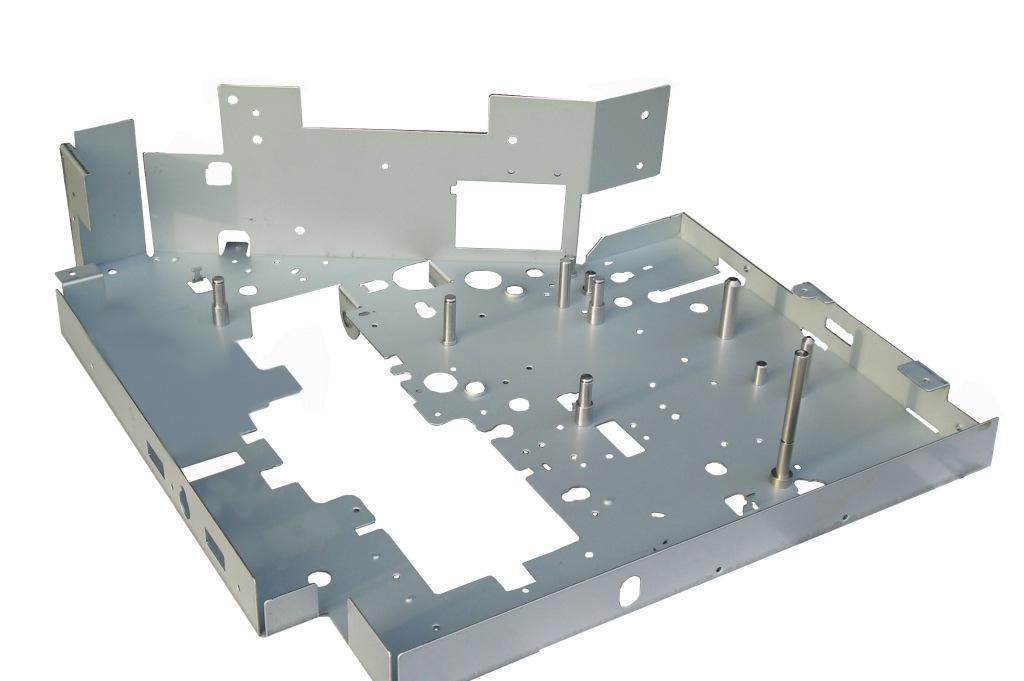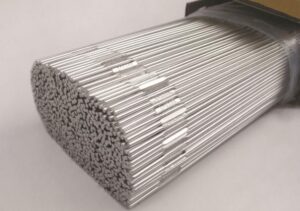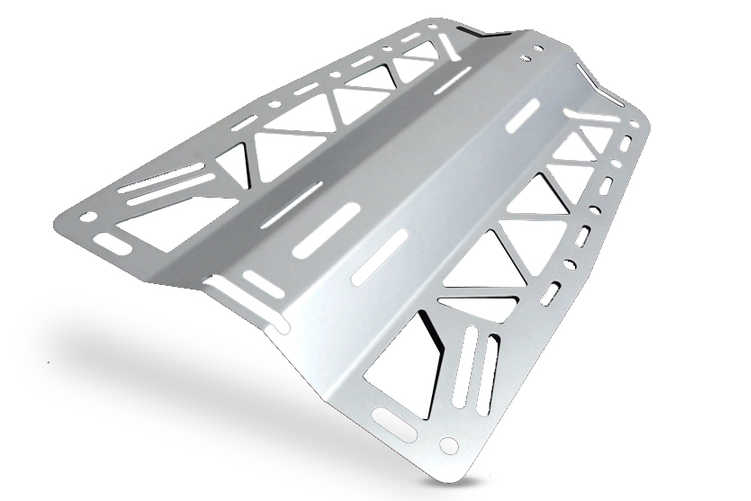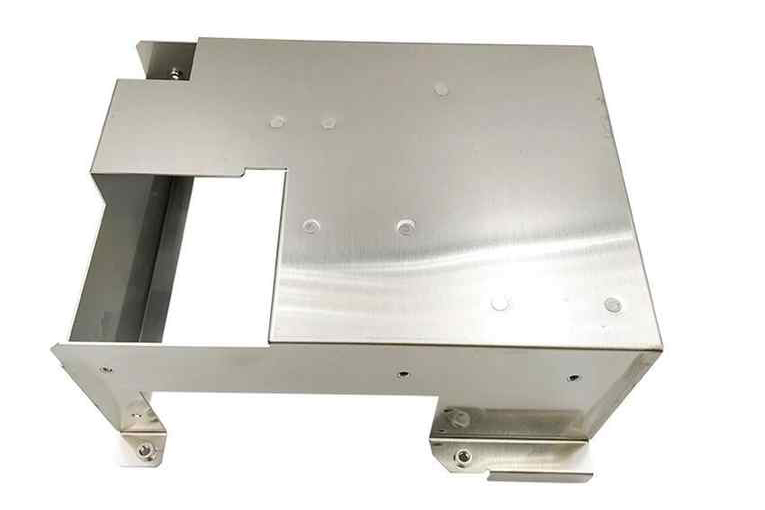
Cabinet Enclosures
November 20, 2021
Basic knowledge of sheet metal parts
November 27, 2021Stainless steel electrode

Stainless steel electrode is very important for Metal Welding and Fabrication.Sometime, it’s the main factor for the quality of sheet metal parts.
Austenitic stainless steel electrodes are widely used in electric power construction sites due to their excellent performance. During construction welding, fully understand the mechanical properties of the welding materials and the materials to be welded, select the welding materials reasonably, determine the welding process, and master the chemical and physical properties of the weld to achieve accurate welding. When welding, the carbon equivalent formula recommended by the International Welding Society is often used to judge the weldability.
1 Analysis and discussion Yili No. 2 Power Plant’s furnace flue gas fan due to thermal imbalance caused by elastic deformation causes excessive thermal vibration. The use of welded steel plates can reduce vibration. The impeller of this fan is made of BS1501-281, imported British steel, and the main chemical components are as shown in the table: 1.1 Analysis of weld cracks. Weld cracks have three forms: crystallization cracks, high-temperature liquefaction cracks and deplasticizing cracks. Austenitic stainless steel welds have a high sensitivity to welding hot cracks, while solidification cracks in hot cracks* tend to occur in the arc crater of the weld bead, which is a single strip or star shape, mostly along the center line of the weld, and some Perpendicular to. Solder wave. Therefore, it can be judged that the nature of the crack is a crystalline crack in the weld.
The causes of crystallization cracks are mainly related to two factors: the plasticity of the weld metal decreases in the late stage of crystallization. Its deformability is related to metallurgical factors; the actual tensile deformation of the weld metal in the late stage of crystallization is related to the process structure conditions.
The crystal cracks produced in the weld of this steel are mainly related to metallurgical factors. Adjusting the crack resistance of weld metal through metallurgical treatment is a fundamental measure to prevent crystal cracks.
When the chromium-nickel austenitic steel welds are solidified, there are three crystallization modes according to different chemical compositions. Different solidification crystallization modes of welds have different susceptibility to solidification cracks. The main reason is that the first S ferrite mode has the strongest resistance to solidification cracking, while the full austenite mode has the lowest crack resistance, chromium, nickel austenite When the crystallization mode of bulk weld changes from S ferrite to pre-austenite or all-austenite mode, the ability to resist cracking and solidification cracks suddenly decreases.
1.2 Elemental analysis The crystallization mode of aluminum and nickel austenite welds mainly depends on the metal in the weld. According to the alloy composition contained in the BSI501-281 steel, the R317 electrode is used for welding, and the quality of the weld meets the requirements of use.
Therefore, the weld crystallization method is the first iron cable body mode, which has the strongest resistance to solidification cracks. During the welding process, the use of A132 and A407 austenitic stainless steel electrodes to weld the steel will produce solidification cracks. This shows that The influencing factors of weld crystallization cracks have little to do with the crystallization mode of the weld, and are mainly related to the chemical composition of the weld. Past practice shows that the change of alloying elements is an important factor affecting the tendency of crystal cracks.
The effect of the same alloying element in different alloy systems is not necessarily the same. For example, manganese is a beneficial element to prevent crystallization cracks, but when copper is present, increasing manganese is disadvantageous. The interaction between manganese and copper promotes the serious development of intergranular segregation.
After comparative analysis, it can be seen that when steel BS1501 is 8%, the weld cracking tendency increases. The amount of Mn in the R317 electrode is less than that of the A132 electrode, and the A132 electrode contains 0.5% Cu; when the A132 austenitic stainless steel electrode is used for welding, the content of Mn and Cu in the weld pool is increased, so that the weld pool The interaction between Cu and Mn elements promotes intergranular segregation during crystallization and causes crystal cracks. The R317 electrode does not contain Cu element, so when the weld is crystallized, the Cu element content is much smaller than the weld formed by the A132 electrode, which greatly reduces the r-grain segregation phenomenon, and even does not produce the inter-grain segregation phenomenon.
In addition, when S and P elements are present at the same time, Ni is also an element that increases the formation of crystal cracks. 3R317 welding rod does not contain Ni element, A132 welding rod contains higher Ni element, and A132 welding rod contains higher Cu element, which is much larger than The Ni content in the R3I7 electrode, therefore, the use of A132 electrode to weld this steel is prone to crystal cracks.
Therefore, the interaction between chemical components is one of the main factors that produce weld crystal cracks. Austenitic stainless steel electrodes are not suitable for welding all low-alloy heat-resistant steels.
2 Methods of controlling the occurrence of hot cracks 2.1 Controlling harmful elements The harmful elements in weld metal mainly come from the base metal and welding consumables. Before welding, it is necessary to carefully analyze and understand the chemical composition, and select the appropriate welding consumables and operating technology. Under normal circumstances, when welding low carbon steel, the content of C, S and P elements should be mainly controlled.
2.2 Modification treatment on the molten pool. A certain modifier is transferred from the welding material to the molten pool to refine the crystal grains and improve the crack resistance. Commonly used elements are M, V, Ti, Nb, AI and so on. In general construction, a certain amount of aluminum powder can be sprayed evenly to the weld before welding.
2.3 Adjust the basicity of the slag The higher the basicity of the welding slag, the less impurities in the molten pool, especially the S element compound, which can significantly reduce the tendency of weld metal to crystallize cracks. Therefore, when welding more important structures , Alkaline welding consumables should be used.
2.4 Analysis factors of cold cracks Foreign researchers generally believe that the chemical composition of steel is the fundamental factor determining crack sensitivity. Therefore, reasonable adjustment of the chemical composition of the base material and research on new high-strength steels with low sensitivity to cold cracks are to prevent cold cracks. The fundamental way.
3 Conclusions and operating points There are more than 40 types of austenitic stainless steel electrodes produced in China, most of which are currently assessed in accordance with the national standard GB983-85. The precautions and operating procedures for the use of austenitic stainless steel electrodes are as follows: 3.1 Titanium calcium type Coated stainless steel electrodes are generally suitable for thin plate flat welding due to their shallow penetration, and are not suitable for all-position welding. At the same time, due to the large welding core resistance, AC is more likely to be red than DC, so use DC power as much as possible.
3.2 When welding important components, the general baking temperature of acid electrode (titanium-calcium type electrode) is ioot~2or, 1 hour; low hydrogen type electrode is at 200T: ~30r, 1 hour, and can not be repeatedly baked, otherwise the coating will easily crack and fall off .
3.3 In order to prevent redness of the coating and overheating of the base material during welding, the current should not be too large.
3.4 When welding, under the premise of ensuring penetration, the welding speed should be as high as possible, the arc should be short, and the electrode should be horizontally swayed as much as possible.
3.5 When multi-layer welding, the surface residue should be carefully removed, and the temperature between layers should not be too high, generally below 100T: before welding the next weld.
There are many factors that affect the welding performance of stainless steel electrodes. The main factors are the chemical composition and mechanical properties of the stainless steel electrodes and the steel to be welded. Therefore, careful analysis and comparison in construction and production. When using austenitic stainless steel electrodes, the content and influence of S, P, Mn, and Cu elements in the base metal and the electrode must be considered in particular.
Welding of low-alloy heat-resistant steel with high copper content in the base metal to be welded is not suitable for welding with austenitic stainless steel and carbon steel electrodes, and generally suitable for low-hydrogen heat-resistant steel electrodes. Medium-carbon low-alloy steel can generally be welded with austenitic stainless steel electrodes (some steels should be welded with low-hydrogen heat-resistant steel electrodes, such as ZG40CrMMnSiR steel), and low-hydrogen carbon steel electrodes are not suitable for welding.



